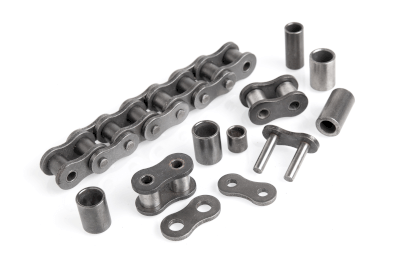What Is a Roller Chain?

A roller chain is a crucial component used to transmit mechanical power. It typically operates in conjunction with sprockets, featuring rollers that engage with each sprocket’s teeth, enabling smooth and efficient power transmission without slippage.
Thanks to their flexibility in shaft distance configuration, roller chains find applications across various industries, from manufacturing to transportation.
Applications of Roller Chains
Roller chains are versatile, used for transmitting power across shafts or for moving objects via attachments. Examples include driving conveyor belts, bicycle transmissions, conveyor-belt sushi systems, and chain saws with attached blades.
Principle of Roller Chains
Constructed from interconnected rollers and plates, roller chains feature a pitch that defines the distance between rollers. They are designed to handle significant power transmissions and can be configured in multi-row setups for increased capacity.
Proper slack and lubrication are vital for their operation, with self-lubricating, maintenance-free models available for specific environments.
Structure of Roller Chains
Roller chains consist of inner and outer links made up of plates, bushings, rollers, and pins, designed to bear loads, resist wear, and ensure durability.
- Plate: Bears the load with required tensile, impact, and fatigue strength.
- Bush: Experiences complex forces and acts in conjunction with pins.
- Roller: Engages sprockets under impact and frictional loads.
- Pin: Undergoes bending and shear stresses, facilitating the chain’s engagement with sprockets.
Types of Roller Chains
Distinguished into strong chains for heavy-duty applications and environment-resistant chains suitable for challenging conditions.
- Strong Chain: Designed for high tensile, impact, and fatigue strength, ideal for applications involving severe impacts.
- Environmentally Resistant Chain: Features excellent resistance to water, abrasion, corrosion, and rust, making it suitable for wet or humid environments, food factories, and chemical plants.
Special coatings and materials like stainless steel or nickel plating enhance their resistance to specific environmental challenges.